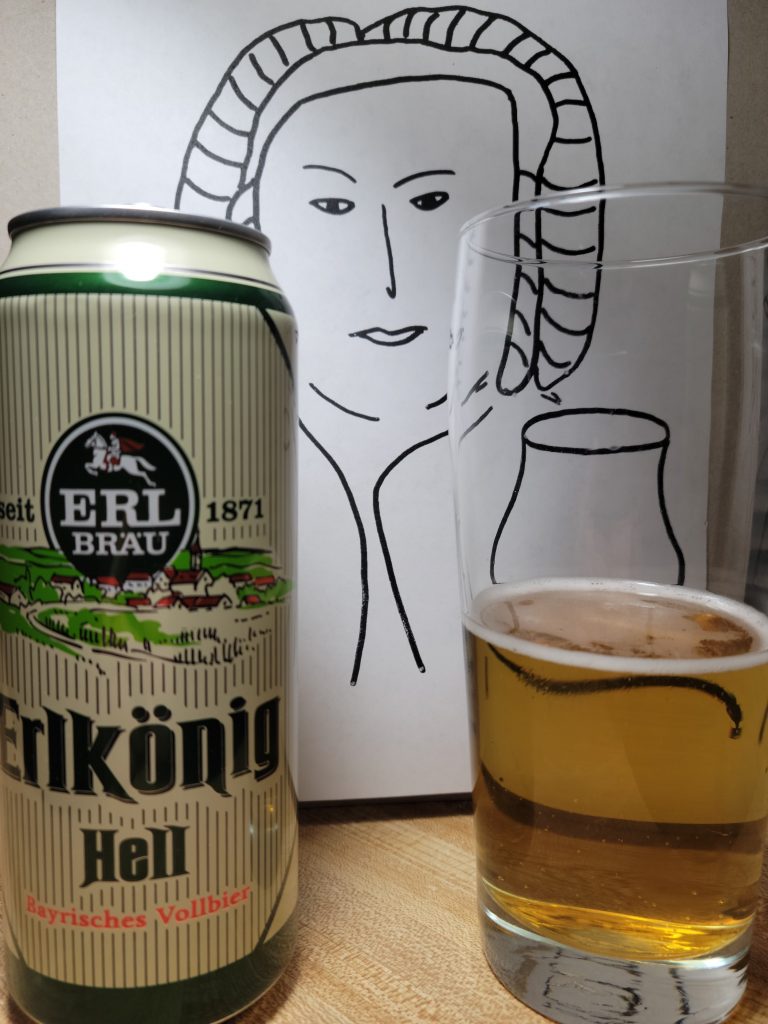The second Advent candle symbolizes faith. That leads to an important question: how can music or beer be faithful?
Today we’re thinking about the Erlkönig, the supernatural antagonist of a poem by Johann Wolfgang von Goethe. In the poem, the Erlkönig chases a horseback father and son through “Nacht und Wind” (night and wind). The poem includes the voices of the Erlkönig trying to lure the son, the boy crying for help from his dad, and the skeptical father. It ends with the father arriving home with his dead child in his arms. A YouTuber who goes simply as “Martin” made a wonderful stop-motion animation with Legos to accompany the poem.
The Erlkönig in Music
“Erlkönig” by Franz Schubert
Another, more famous, adaptation of Goethe’s poem is the song setting by Franz Schubert. The violent energy of Goethe’s wind animates the pounding piano, and the Erlkönig sings a soothing melody over the son’s desperate interjections. Baritone Philippe Sly and pianist Maria Fuller bring the song to life below:
Erlkönig on Piano
Schubert’s demanding piano accompaniment has inspired several important pianists to create their own versions of “Erlkönig.” In the nineteenth century, Franz Liszt transcribed Schubert’s song for solo piano. In the twenty-first century, Canadian pianist Marc-André Hamelin published a more fanciful adaptation in the form of an étude.
Marc-André Hamelin plays his Erlkönig étude
Musicians often ask questions about whether a performance is faithful. Is the music played on “period instruments”? Is it true to the “composer’s intentions”? Those types of questions lead more often to fighting than to enlightenment or enjoyment. Asking not whether but how a performance is faithful invites listeners to assess the music both charitably and critically.
Hamelin’s piece is faithful to its source material in several ways. Although he included the words “after Goethe” in his title, the étude also bears Schubert’s influence. The left-hand part recalls both the driving octaves and the slithering bass of Schubert’s accompaniment, and the right-hand melodies sing with Schubertian lyricism. Of course, the étude is also faithful to Goethe’s text. Perhaps its strongest connection to the poem is its harmony, which suggests the Erlkönig’s escalating seduction by being first jazzy, then lurid, and finally deranged.
The Beer: Erlkönig Hell by Landbrauerei Ludwig Erl
How is the Erlkönig Hell by Erl-Bräu faithful to its source material? First, this beer from day 20 of the 2022 Kalea beer advent calendar demonstrates many classic characteristics of traditional helles lagers. It has a sunny hue worthy of the German word for “bright,” helles. Its refreshing flavor balances grain and mild spice.

Additionally, the Erlkönig Hell relates to Goethe’s poem. Sure, the name is probably just a pun: König means “king” in German, so it’s not surprising Erl-Bräu would make an “Erl-King” beer. Nevertheless, the beer’s hops nip like Goethe’s night wind. You might even be able to detect the earth and straw from the father’s stable in the beer’s bouquet.
A Toast for Advent
Whether brewing lager or writing music, modern creators can honor the past while building the future. Drink up, listen in, and keep the faith.